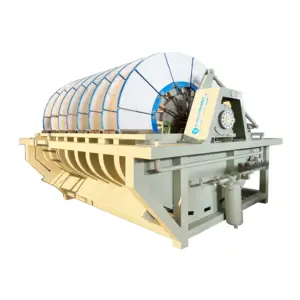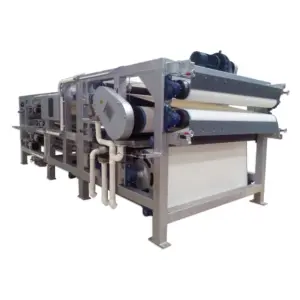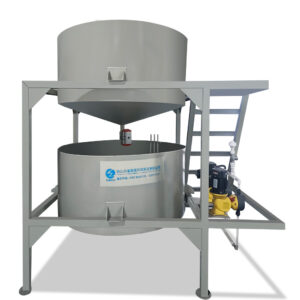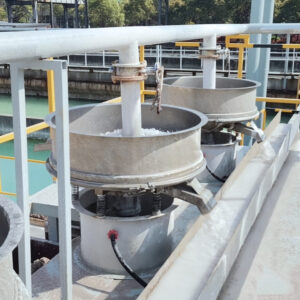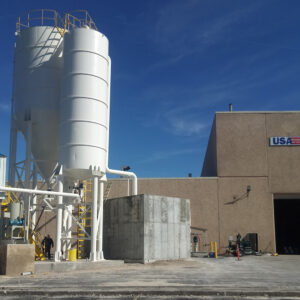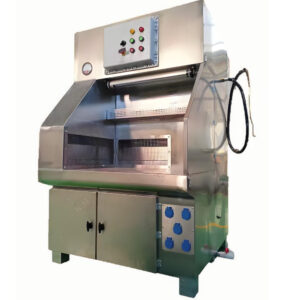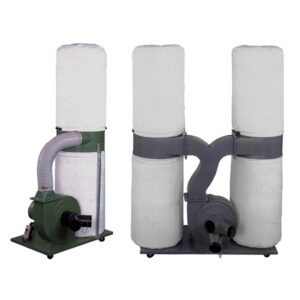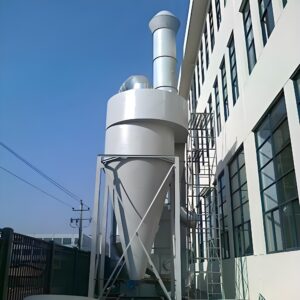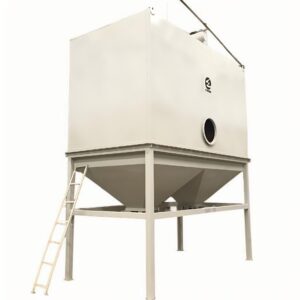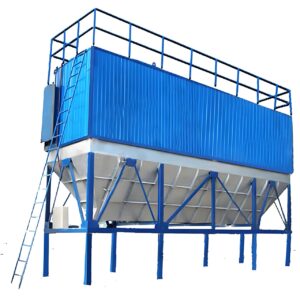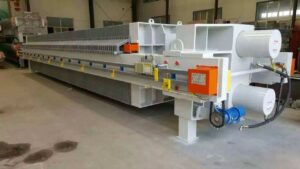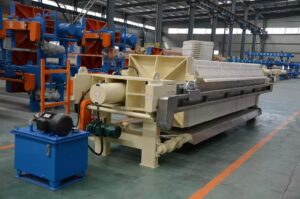CE marking for downdraft tables is a critical process that ensures these essential pieces of industrial equipment meet the safety, health, and environmental protection requirements set by the European Union. As manufacturers and users of downdraft tables navigate the complex landscape of regulatory compliance, understanding the intricacies of CE marking becomes paramount for successful market entry and operation within the EU.
This comprehensive guide delves into the CE marking requirements specifically tailored for downdraft tables, offering invaluable insights for manufacturers, importers, and distributors. We'll explore the key directives, standards, and procedures that govern the CE marking process, providing a roadmap for achieving compliance and maintaining a competitive edge in the European market.
From understanding the basics of CE marking to navigating the nuances of technical documentation and conformity assessment, this article aims to equip industry professionals with the knowledge needed to ensure their downdraft tables meet all necessary requirements. Let's embark on this journey through the world of CE marking for downdraft tables, uncovering the steps to compliance and the benefits of adhering to these stringent European standards.
As we delve deeper into the subject, it's important to recognize that CE marking is not just a regulatory hurdle but a mark of quality and safety that can enhance the reputation of PORVOO and other manufacturers in the global marketplace. By understanding and implementing these requirements, companies can ensure their downdraft tables are not only compliant but also competitive and trusted by users across the European Union and beyond.
CE marking for downdraft tables is a mandatory process for manufacturers wishing to sell their products in the European Economic Area (EEA). It signifies that the product complies with all applicable EU directives and regulations, ensuring safety, health, and environmental protection standards are met.
What are the key directives applicable to downdraft tables?
When it comes to CE marking for downdraft tables, several EU directives come into play, each addressing different aspects of safety and performance. Understanding these directives is crucial for manufacturers and importers alike.
The primary directives that typically apply to downdraft tables include the Machinery Directive 2006/42/EC, the Low Voltage Directive 2014/35/EU, and the Electromagnetic Compatibility (EMC) Directive 2014/30/EU. Depending on the specific features and intended use of the downdraft table, additional directives may also be relevant.
Diving deeper, the Machinery Directive is particularly significant for downdraft tables as it covers safety aspects related to mechanical hazards. The Low Voltage Directive ensures electrical safety, while the EMC Directive addresses electromagnetic compatibility issues that could arise from the electrical components of the table.
The Machinery Directive 2006/42/EC is the cornerstone of CE marking for downdraft tables, setting out essential health and safety requirements for machinery design and construction.
| Directive | Key Focus | Relevance to Downdraft Tables |
|---|---|---|
| Machinery Directive 2006/42/EC | Mechanical safety | Core safety requirements |
| Low Voltage Directive 2014/35/EU | Electrical safety | Electrical components safety |
| EMC Directive 2014/30/EU | Electromagnetic compatibility | Prevention of electromagnetic interference |
How does the risk assessment process work for downdraft tables?
Risk assessment is a critical step in the CE marking process for downdraft tables. It involves identifying potential hazards associated with the use of the table and evaluating the level of risk they pose to users and the environment.
For downdraft tables, common risks might include those related to dust exposure, mechanical hazards from moving parts, electrical risks, and potential fire hazards. Manufacturers must conduct a thorough analysis of these risks and implement appropriate safety measures to mitigate them.
The risk assessment process typically involves several stages, including hazard identification, risk estimation, and risk evaluation. Based on the outcomes of this assessment, manufacturers can design and implement necessary safety features and provide appropriate user instructions and warnings.
A comprehensive risk assessment is essential for CE marking compliance, as it forms the basis for the technical file and the Declaration of Conformity required for downdraft tables.
| Risk Category | Examples for Downdraft Tables | Mitigation Measures |
|---|---|---|
| Dust Exposure | Fine particle inhalation | Efficient filtration systems |
| Mechanical Hazards | Pinch points, moving parts | Guards, emergency stops |
| Electrical Risks | Short circuits, electrocution | Proper insulation, grounding |
| Fire Hazards | Spark ignition of dust | Spark arrestors, fire-resistant materials |
What technical documentation is required for CE marking of downdraft tables?
Technical documentation plays a crucial role in the CE marking process for downdraft tables. This documentation serves as evidence of compliance with the relevant EU directives and must be comprehensive and up-to-date.
The technical file for a downdraft table should include detailed product information, design drawings, risk assessments, test reports, and a user manual. It must also contain a description of the means used to ensure conformity of production with the essential requirements of the applicable directives.
One of the key components of the technical documentation is the Declaration of Conformity. This document, signed by the manufacturer or authorized representative, officially declares that the downdraft table meets all relevant EU requirements.
The technical file must be kept available for inspection by national authorities for at least 10 years after the last unit of the downdraft table has been manufactured.
| Document Type | Purpose | Key Components |
|---|---|---|
| Design Drawings | Product specification | Detailed schematics, material specifications |
| Risk Assessment | Safety evaluation | Identified hazards, risk mitigation measures |
| Test Reports | Performance verification | Results of safety and performance tests |
| User Manual | Operating instructions | Safety guidelines, maintenance procedures |
| Declaration of Conformity | Official compliance statement | List of applied directives, standards |
How are conformity assessment procedures carried out for downdraft tables?
Conformity assessment procedures are a critical part of the CE marking process for downdraft tables. These procedures are designed to ensure that the product meets all the essential requirements set out in the applicable EU directives.
For downdraft tables, the specific conformity assessment procedure will depend on the directives that apply and the level of risk associated with the product. In many cases, manufacturers can self-declare conformity through internal production control, especially if they have followed harmonized European standards in the design and production process.
However, for higher-risk categories or when certain directives apply, third-party involvement may be necessary. This could involve having the product type-examined by a Notified Body or implementing a full quality assurance system that is assessed and approved by a Notified Body.
Self-declaration of conformity is often sufficient for downdraft tables, but manufacturers must ensure they have robust processes in place to demonstrate compliance if challenged.
| Assessment Type | Description | Applicability to Downdraft Tables |
|---|---|---|
| Self-Declaration | Internal production control | Common for standard designs |
| Type Examination | Third-party product assessment | May be required for novel designs |
| Full Quality Assurance | Comprehensive quality system assessment | Optional, enhances credibility |
What are the specific safety standards relevant to downdraft tables?
Safety standards play a crucial role in the CE marking process for downdraft tables. These standards provide detailed technical specifications that, when followed, can help manufacturers presume conformity with the essential requirements of the relevant EU directives.
For downdraft tables, several harmonized European standards may be applicable. These could include standards related to machinery safety, electrical safety, and dust collection systems. For example, EN ISO 12100 for machinery safety principles and EN 60204-1 for electrical equipment of machines are often relevant.
Additionally, specific standards for dust extraction equipment, such as EN 16770 for safety of woodworking machines – chip and dust extraction systems, may provide valuable guidance even if not directly applicable to all types of downdraft tables.
While adherence to harmonized standards is voluntary, it provides a presumption of conformity with the corresponding essential requirements of EU directives, simplifying the CE marking process.
| Standard | Focus Area | Relevance to Downdraft Tables |
|---|---|---|
| EN ISO 12100 | General machinery safety | Overall safety principles |
| EN 60204-1 | Electrical safety of machines | Electrical components safety |
| EN 16770 | Dust extraction for woodworking | Guidance on dust collection systems |
How does CE marking affect the design and manufacturing of downdraft tables?
CE marking requirements have a significant impact on the design and manufacturing processes of downdraft tables. Manufacturers must consider these requirements from the earliest stages of product development to ensure compliance and avoid costly redesigns later in the process.
The design phase must incorporate safety features that address the risks identified during the risk assessment. This could include features such as emergency stop buttons, safety guards, and efficient filtration systems. The choice of materials and components must also take into account the need for compliance with relevant directives and standards.
During manufacturing, quality control processes must be implemented to ensure consistent compliance with the requirements established during the design phase. This includes maintaining detailed records of production processes, material sourcing, and quality checks.
Integrating CE marking considerations into the design and manufacturing processes not only ensures compliance but can also lead to improved product quality and safety, benefiting both manufacturers and end-users.
| Design Aspect | CE Marking Consideration | Example for Downdraft Tables |
|---|---|---|
| Safety Features | Risk mitigation | Incorporation of emergency stops |
| Material Selection | Compliance with standards | Use of fire-resistant materials |
| Quality Control | Consistent conformity | Implementation of regular testing procedures |
What are the labeling and information requirements for CE-marked downdraft tables?
Proper labeling and information provision are essential components of the CE marking process for downdraft tables. These requirements ensure that users have access to crucial safety information and that the product's compliance is clearly visible.
The CE mark itself must be affixed to the downdraft table in a visible, legible, and indelible manner. Alongside the CE mark, certain other information must be provided, including the manufacturer's name and address, the product's serial number or batch identification, and the year of construction.
Additionally, downdraft tables must be accompanied by comprehensive user instructions. These should include safety information, operating instructions, maintenance requirements, and any limitations on use. All information must be provided in the official language(s) of the country where the product is sold.
Clear and comprehensive labeling and user information not only fulfill CE marking requirements but also contribute to the safe and effective use of downdraft tables, reducing the risk of accidents and misuse.
| Information Type | Requirement | Location |
|---|---|---|
| CE Mark | Visible, legible, indelible | On the product |
| Manufacturer Details | Name and address | On the product or packaging |
| Product Identification | Serial number or batch ID | On the product |
| User Instructions | Comprehensive guide | Accompanying document |
As we conclude our exploration of CE marking requirements for downdraft tables, it's clear that this process is both comprehensive and crucial for ensuring product safety and compliance in the European market. From understanding the applicable directives to conducting thorough risk assessments, preparing detailed technical documentation, and implementing appropriate conformity assessment procedures, each step plays a vital role in achieving CE marking.
Manufacturers and importers of downdraft tables must navigate this complex landscape with diligence and attention to detail. By integrating CE marking considerations into every stage of product development and manufacturing, companies can not only meet regulatory requirements but also enhance the quality and safety of their products.
The benefits of proper CE marking extend beyond mere compliance. It opens doors to the vast European market, instills confidence in customers, and can serve as a competitive advantage. For companies like PORVOO, adhering to these standards demonstrates a commitment to quality and safety that resonates with users across industries.
As the regulatory landscape continues to evolve, staying informed about CE marking requirements remains an ongoing responsibility. By maintaining a proactive approach to compliance, manufacturers of downdraft tables can ensure their products remain at the forefront of safety and performance in the global marketplace.
Remember, while CE marking may seem like a complex process, it ultimately serves to protect users and ensure the free movement of safe products within the European Economic Area. For those seeking further guidance on CE marking for downdraft tables or looking for compliant products, exploring options like the CE marking for downdraft tables can provide valuable insights and solutions.
External Resources
DraftMax for heavy-duty applications – Downdraft tables – Plymovent – This page details the DraftMax downdraft table, which complies with several EU directives including the Machine Directive, EMC, LVD, and ErP Directive. It highlights the table's features and compliance with EU standards.
Downdraft tables | ESTA Extraction Technology – This resource explains the various types of downdraft tables offered by ESTA, including their compliance with EU standards and certifications such as ATEX for use in potentially explosive zones.
Metal Capture Downdraft Table – Dynabrade – This PDF provides specifications and features of Dynabrade's Metal Capture Downdraft Table, including its compliance with NFPA requirements and the pending CE certification for European countries.
Measuring Instruments Directive 2014/32/EU – CE Marking – Although primarily focused on measuring instruments, this guide explains the general process of CE marking, risk and conformity assessment, and technical documentation, which can be relevant for understanding CE marking requirements for downdraft tables.
UKCA & CE Marking for Processes – Conformance Ltd – This page provides guidance on CE marking and compliance for process industries, including the steps and directives involved, which can be applicable to downdraft tables used in industrial settings.
CE Marking for Machinery – European Commission – This official EU resource explains the Machinery Directive and the process for CE marking machinery, which includes downdraft tables used in industrial environments.
CE Marking: A Guide to Compliance – SGS – This guide from SGS provides an overview of the CE marking process, including the necessary steps and directives for ensuring compliance, which is relevant for manufacturers of downdraft tables.
EU CE Marking Directives – CE Marking Association – This resource lists various EU directives, including those relevant to machinery and electrical equipment, and provides guidance on how to comply with CE marking requirements, which is essential for downdraft tables.
